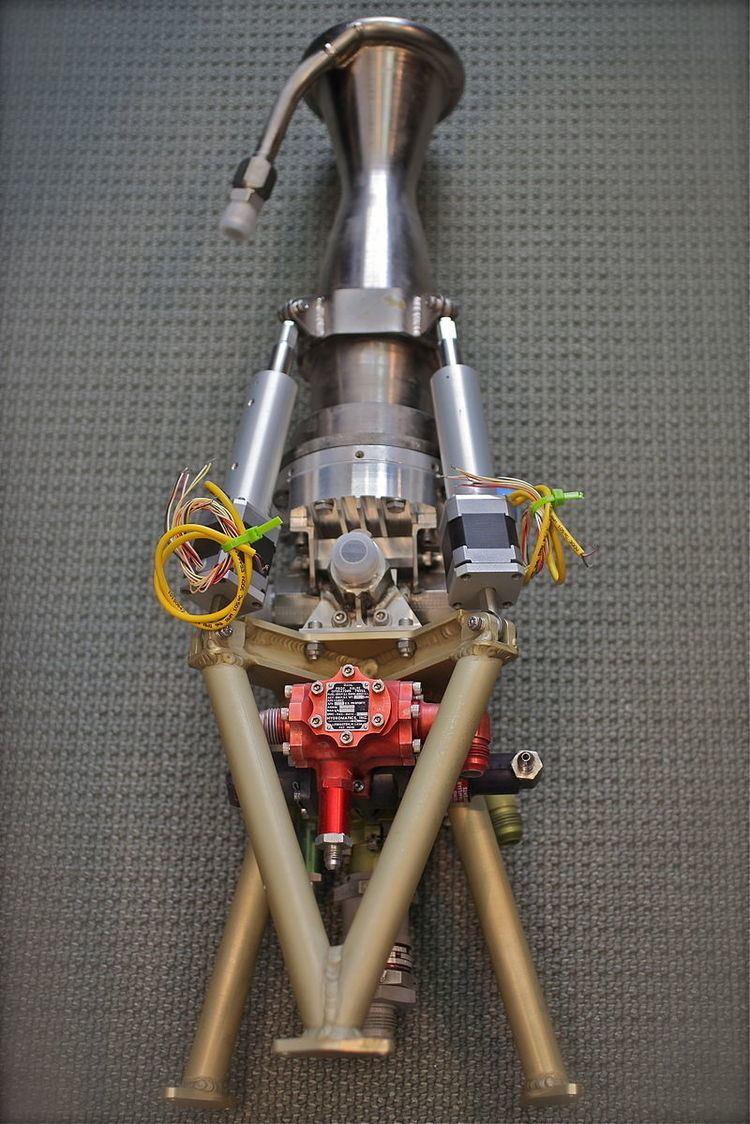 | ||
A vernier thruster is a rocket engine used on a spacecraft for fine adjustments to the attitude or velocity of a spacecraft. Depending on the design of a craft's maneuvering and stability systems it may simply be a smaller thruster next to the main propulsion motors, or it may complement larger attitude control motors, or may be a part of the reaction control system. The name is derived from vernier calipers (named after Pierre Vernier) which have a primary scale for gross measurements, and a secondary scale for fine measurements.
Vernier thrusters are used when a heavy spacecraft requires a wide range of different thrust levels for attitude or velocity control, as for maneuvering during docking with other spacecraft.
On space vehicles with two sizes of attitude control thrusters, the main ACS (Attitude Control System) thrusters are used for larger movements, while the verniers are reserved for smaller adjustments.
Due to their weight and the extra plumbing required for their operation, vernier rockets are seldom used in new designs. Instead, as modern rocket motors became better controllable, larger thrusters could also be fired for very short pulses, resulting in the same change of momentum as a longer thrust from a smaller motor.
Vernier thrusters are used in rockets such as the R-7 for vehicle maneuvering because the main engine is fixed in place. For the Atlas rocket family, in addition to maneuvering, the verniers were used for roll control, although the booster engines could also perform this function. After sustainer engine cutoff, the verniers would execute solo mode and fire for several seconds to make fine adjustments to the vehicle attitude. The Thor/Delta family also used verniers for roll control, but mounted on the base of the thrust section flanking the main engine.
